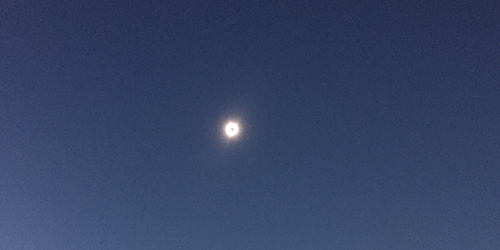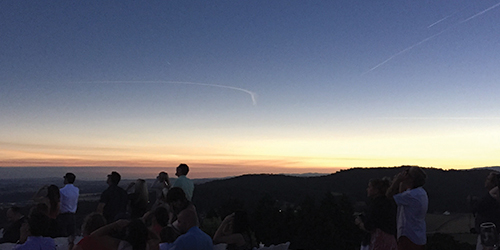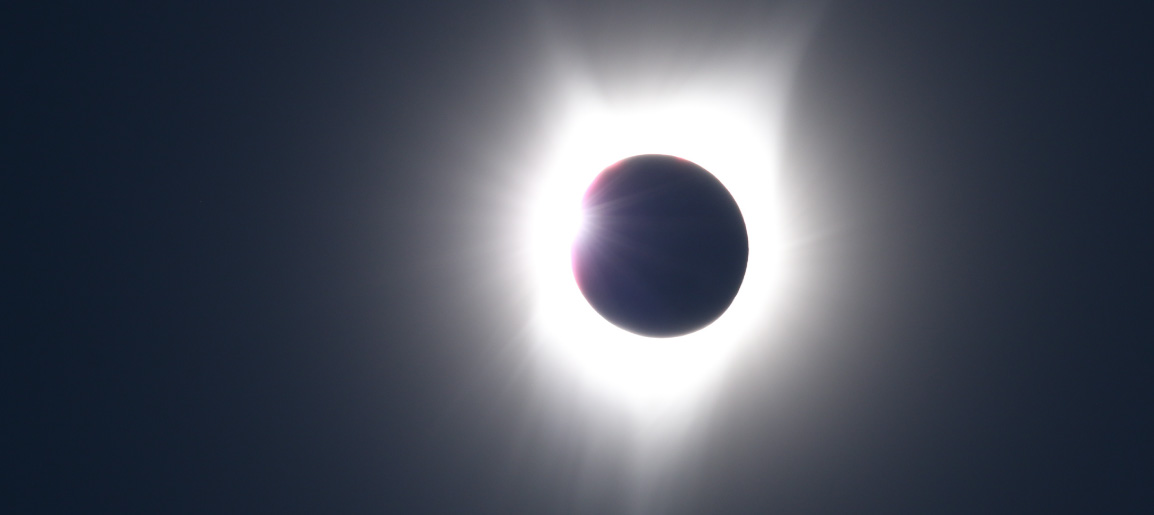Earlier this week, a total solar eclipse swept across much of the United States. Regardless of where you live, total solar eclipses are relatively rare phenomena. Although they tend to occur a few times a year, the vast majority of solar eclipses are only visible in the middle of the ocean or over swaths of uninhabited land. Lucky for us, the path of totality for the August 21, 2017 eclipse passed just south of our Beaverton, Oregon, headquarters. Prior to this year, the last solar eclipse visible in the mainland U.S. occurred in 1979. The next total solar eclipse visible in Oregon won’t happen until October 5, 2108, so we decided to take a little field trip to view this once-in-a-lifetime event.
I remember my fifth grade teacher leading us out of his classroom, shoebox eclipse viewers in hand, to watch a partial solar eclipse from my elementary school playground. I also remember shrugging, staring into the little pinhole camera, and feeling underwhelmed. This time around, I was cautiously hopeful. There was so much hype surrounding this eclipse. News reports warned of fuel and water shortages, apocalyptic traffic jams, and, Oregon being Oregon, the very real possibility of overcast skies blocking the whole event. Instead, we sailed down the highway with ease, stood atop a hill in the unspoiled daylight, and waited for the moon to chase the sun across the sky.
In an essay describing her experience viewing the 1979 eclipse, Annie Dillard wrote,
“What you see in an eclipse is entirely different from what you know. It is especially different for those of us whose grasp of astronomy is so frail that, given a flashlight, a grapefruit, two oranges, and 15 years, we still could not figure out which way to set the clocks for daylight saving time. Usually it is a bit of a trick to keep your knowledge from blinding you. But during an eclipse it is easy. What you see is much more convincing than any wild-eyed theory you may know.”
She’s right, of course. You can know intellectually that viewing a total solar eclipse is cool, but nothing prepares you for the actual experience. The temperature dropped considerably as the moon’s path crept across the sun. People gasped audibly and fumbled with their viewing glasses. Shadow bands appeared on the pavement below our feet. We saw Venus glowing in the darkened sky in the middle of the morning. The eclipse was indescribably amazing, and we were very fortunate to spare a few hours to experience it.
Did you miss the eclipse because you live outside the path of totality (or because you decided to sleep in)? We took a few photos to share with you. Enjoy!




For extra fun:
*Header photo credit: Paul Criswell; additional photo credits: Caitlin Lilly
